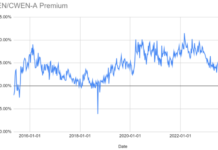by the Climate Bonds Team
Hannon Armstrong’s (HASI) second green ABS, $118.6m, will save 0.39 tons of GHG annually per $1,000! ($100.5m, 4.28%, 19 yr, A and $18.1m, 5.00%, 19 yr, BBB)
Hannon Armstrong (NYSE:HASI) closed its second green ABS bond (Sustainable Yield Bond) following its inaugural issuance in December 2013. The ABS was a private placement split into two tranches with different credit ratings (from Kroll Bond Credit Rating Agency): $100.5m with a rating of A and 4.28% interest rate, and $18.1m with a rating of BBB and 5.00% interest rate. Both tranches have a 19-year tenor.
Similar to its first green bond, the green ABS is a securitization of ground lease payments for the land used by solar or wind operating assets. Most large scale US wind and solar projects do not own the land on which the assets are installed and operated. Instead it is essential for long-term leases to be agreed to enable stable cash flow of on-shore renewable projects.
For every $1,000 invested in the bond 0.39 tons of carbon will be saved annually according to a CarbonCount review. CarbonCount was originally pioneered by Hannon Armstrong and further developed by the Alliance to Save Energy as part of the BNEF FiRE initiative.
Now, it may spring to mind, how do leases for land relate to a direct carbon saving of 0.39 tons annually?
CarbonCount uses a 1:1 ratio between project emission savings and total capital costs, therefore every $ spent on capital cost, from buying the hardware to renting the land, is linked to an equal proportion of the carbon emissions saved by the entire project.
Here is a brief overview of how it works: independent audits of each project determine the expected energy output. This is then fed into the US Environment Protection Agency (EPA) energy-to-emissions model to estimate the amount of carbon displaced by producing renewable energy rather than non-renewable, based on the existing energy mix of the State where the project is.
The total annual carbon saved is then split across the total capital cost of the project. The capital cost covers all aspects of the projects (from the wind turbines or solar panels, to the contractual ground leases). The result: for each dollar spent on capital costs of green projects, the amount of carbon saved is the same. So, the score of this bond is based on the emissions saved associated with the total amount of ground lease payment.
Now, this is a really exciting step in transparency of green bonds as it gives investors a tangible impact of their investment per dollar. Other green bonds can leverage CarbonCount, but at the moment the tool seems to be limited to US based renewable energy projects because of the dependence on the US EPA model (we expect this will change in time as CarbonCount grows). Though, we still need to keep our collective eyes on the prize – it’s about a rapid transition to a global low carbon and climate resilient economy. That means we need to think about carbon emissions (absolutely!) but we also need to include assets that are even more complex to define such as sustainable water across broader geographical scope.
The Climate Bonds Team includes Sean Kidney, Tess Olsen-Rong, Beate Sonerud, and Justine Leigh-Bell.
The Climate Bonds Initiative is an “investor-focused” not-for-profit promoting long-term debt models to fund a rapid, global transition to a low-carbon economy.








